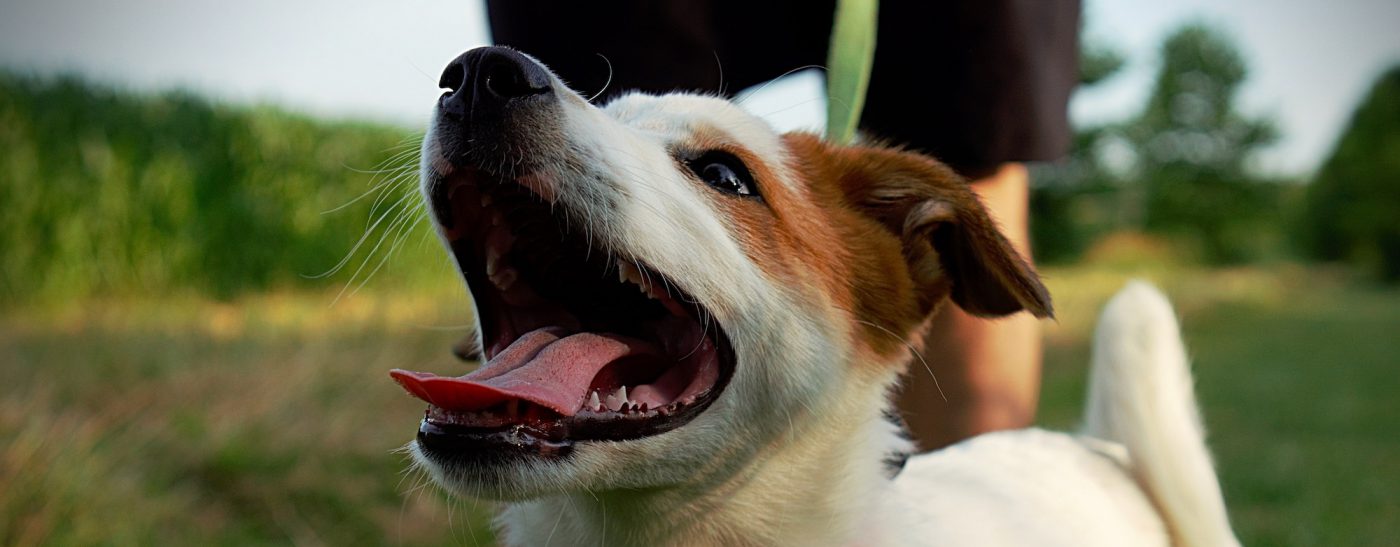Good dental health is critical for a dog’s overall well-being. The keys to maintaining good oral health are regular brushings and feeding a fresh food diet . If you are doing those things and your dog’s breath is still consistently terrible, be sure to visit your vet for an assessment.
But if your dog’s breath could use just a little sprucing up, you can enlist the help of some additional natural remedies. The best part? You can probably find most of these ingredients right in your kitchen.
What causes bad breath in dogs
First, it’s important to understand why your dog’s breath might be offensive. The most common cause of bad breath in dogs is periodontal disease, a condition suffered by over 80% of dogs over the age of 3.
Whenever a dog eats, food particles mix with bacteria in the dog’s mouth, and if your pet’s teeth are not brushed soon after eating, the residue forms a film called plaque. Plaque buildup in turn can harden into tartar if not brushed away and when tartar buildup develops beneath the gum line it can lead to periodontal disease.
There are a range of other medical issues that can lead to bad breath, including diabetes, liver or kidney disease, and gastrointestinal issues. If your dog’s breath is consistently foul, and you notice other symptoms, like loss of appetite, excessive drooling or drinking, or vomiting, be sure to consult your vet.
Natural ways to cure bad dog breath
DIY Dog Toothbrush
Can’t get your dog on board with a traditional toothbrush yet? Try working up to a full brushing by wrapping a clean piece of gauze around your finger and running it over your dog’s teeth. There are also rubber brushes that fit on the end of your finger. Never use human toothpaste as it may contain xylitol, an ingredient that can cause liver failure in dogs. You should also avoid baking soda, and it’s not good for dogs to ingest. Use a dedicated dog toothpaste.
Read more about brushing your dog’s teeth here.
Pinch of parsley
The king of garnishes provides an array of vitamins and minerals that can help with immunity, vision, and kidney health. It’s rich in antioxidants that protect against free-radical damage, it can help relieve swelling and pain from arthritis and other inflammatory conditions, and soothe upset stomach and digestive problems. It’s also famous as a breath freshener. Add small amounts to food, or blend with water (1 teaspoon per 20 pounds of bodyweight) to create a juice you can pour right into your dog’s water bowl. And another note of caution: Be sure you’re choosing the curly leaf variety. Spring parsley, a member of the carrot family that looks like parsley is toxic to dogs.
Homemade treats
Try your hand at DIY dog treats and freshen your dog’s stinky breath by whipping up some homemade breath mints. Blend oats, eggs, water, coconut oil, parsley, and mint, roll out the mixture, cut into small shapes, and bake for 35-40 minutes at 325° F. Allow to cool completely before serving. Be sure to feed sparingly.
Carrots and apple slices
Carrots and apple slices are two healthy snack options for dogs, especially when it comes to teeth and breath. Carrots and apples make great healthy snacks and treats, and keep breath fresh. They’re also a great treat for teething puppies! Pop carrots in the freezer for a cool treat.
Apple cider vinegar
Apple cider vinegar, a staple in the pantry of health-conscious humans, is also great for dogs. Adding roughly half a teaspoon of raw organic apple cider vinegar to your dog’s water bowl can help freshen up breath.
Probiotics
Supplementing your pup’s regular diet with a probiotic formulated specifically for dogs can help balance healthy oral bacteria and keep breath smelling fresh. Check with your vet about the best brand of probiotics for your dog and an appropriate dosage.
Coconut oil
Coconut oil is known for its immunity boosting properties and for improving skin and coat health. It can also be used to help fight bad dog breath. You can add a little (start very slowly to prevent stomach upset) to your dog’s food, or you can use it when brushing your dog’s teeth.
Image: @olgavang









